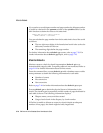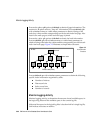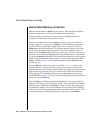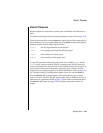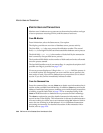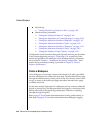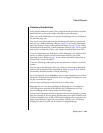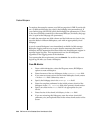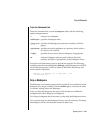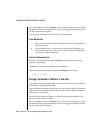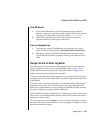
3-86 IBM Informix OnLine Database Server Administrator’s Guide
Monitor Users and Transactions
Monitor Users and Transactions
Monitor users’ database server processes to determine the number and type
of server processes accessing OnLine, and the status of each one.
From DB-Monitor
From DB-Monitor, select the Status menu, User option.
The display provides an overview of database server process activity.
The first field,
PID, is the user process identification number. The second
field, User, is the login ID of the user that created this database server process.
The third field, Locks Held, is the number of locks held by the transaction
that is owned by the specified server process.
The fourth and fifth fields are the number of disk reads and write calls made
since the process started.
The last field describes a set of user status flags. A complete description of all
possible user flags is provided on page 7-99.
If a server process displays an X flag in the User Status field, the process is
in a critical section. No checkpoints can occur until the server process exits
that section of code. Never kill a database server process that is in a critical
section. If you do, OnLine immediately initiates an abort.
From the Command Line
From the command line, execute, tbstat -u to obtain user information that is
similar to that available from DB-Monitor. In addition, tbstat -u provides the
address of each listed user process, enablingyou to track the user process that
is holding a specific latch. Refer to page 7-99 for a complete listing of the
tbstat -u fields that refer to database server processes and their meanings.
The tbstat -u option also provides detailed transaction information in the
second section of the display. This information is relevant for administrators
who are working in a client/server environment using IBM Informix STAR or
users who are working in an IBM Informix TP/XA distributed transaction-
processing environment. For detailed discussion of this transaction infor-
mation, refer to page 9-58.



